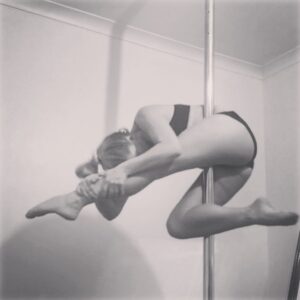Breaking Movement Habits
 Breaking movement habits is something that all dancers should consider. But, what is it that causes us to build up this habitual way of moving? When we dance, our brain can sometimes switch onto autopilot and the movement that is soft or the movement that is explosive and powerful will look similar to something you have already done, or alike a person or a dance work you have watched a lot. Like most dancers, I’m totally guilty of habitual movement and it can sometimes leave me frustrated when I see that I am not giving myself anything else. As a remedy to combat this frustration I look what I do, why I do it and when I do it. There was a time where I watched a lot of Bob Fosse and without even realising it I ended up doing similar movement to this Jazz style, but in a contemporary dance setting. The sharp, precise movement was so glued into my brain that I found ways to put it through my body during improvisation. I like to think that it looked great, but I wasn’t giving myself anything else to play with.
Breaking movement habits is something that all dancers should consider. But, what is it that causes us to build up this habitual way of moving? When we dance, our brain can sometimes switch onto autopilot and the movement that is soft or the movement that is explosive and powerful will look similar to something you have already done, or alike a person or a dance work you have watched a lot. Like most dancers, I’m totally guilty of habitual movement and it can sometimes leave me frustrated when I see that I am not giving myself anything else. As a remedy to combat this frustration I look what I do, why I do it and when I do it. There was a time where I watched a lot of Bob Fosse and without even realising it I ended up doing similar movement to this Jazz style, but in a contemporary dance setting. The sharp, precise movement was so glued into my brain that I found ways to put it through my body during improvisation. I like to think that it looked great, but I wasn’t giving myself anything else to play with.
Another strong factor that plays a significant part in our movement habits is the style of the person who taught you most. When you have been in training with the same teacher for a few years, you pick up their movement so much so that you bring it into your work as a habit. This is not a bad thing as it will obviously look different on your body in comparison to theirs. However, in choreography habits are something that you should move away from in order to expand your lexicon of movement. Taking class with another teacher every so often should help with this, or even spending time looking at a piece of choreography you learned from them and then adapting it for a completely different mood or to another piece of music.
Alongside training, dancers often work by themselves which probably amounts to more hours alone that it does with the teacher, so there are tasks that you could do in order to look at your movement habits and to play around with breaking them.
Record yourself performing a two minute improvisation, with or without the pole. Watch it back and look at what you did the most; maybe you have a lot of straight lines, you repeated the same gesture of tick over and over or your do a lot of movement that is grounded to the floor or near the bottom of the pole. Pick anything that stands out and then ask yourself what would happen if in the next round of improvising you did the complete opposite, you broke the lines and climbed higher on the pole, or even stayed upright on the floor. Give yourself the direction to change and repeat the recorded improvisation for two minutes and then watch to see what you came up with when you stepped away from those habits.
Alternatively, you could do this exercise with a friend who could watch you and point out your habits and give you direction for the next round. You would then switch roles and discuss how this was beneficial to the way you moved in the space.
Let me know how you get on with this task on Twitter and Instagram and don’t forget to sign up to the Pole Purpose newsletter so you never miss out on a post.




No Comments